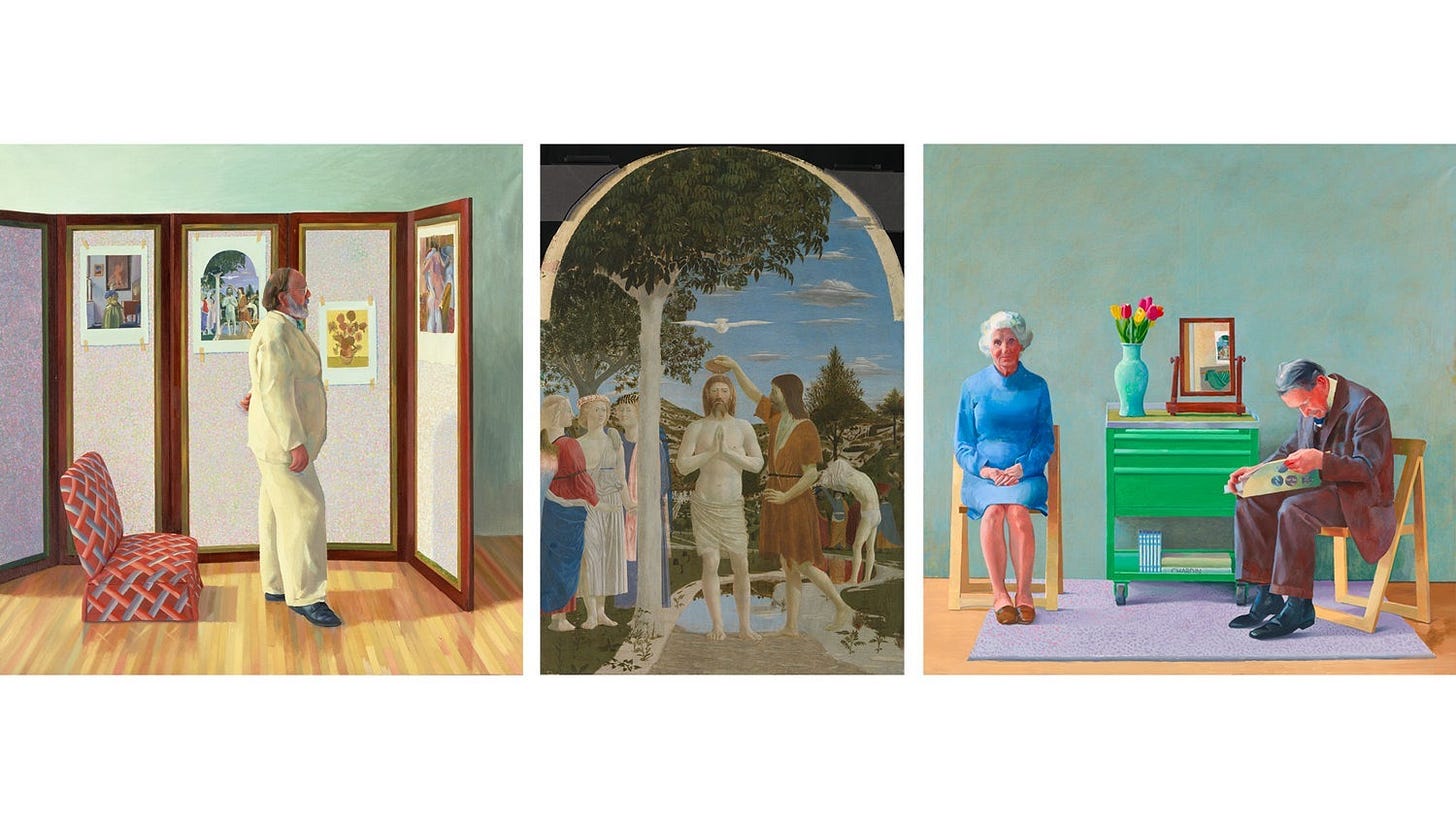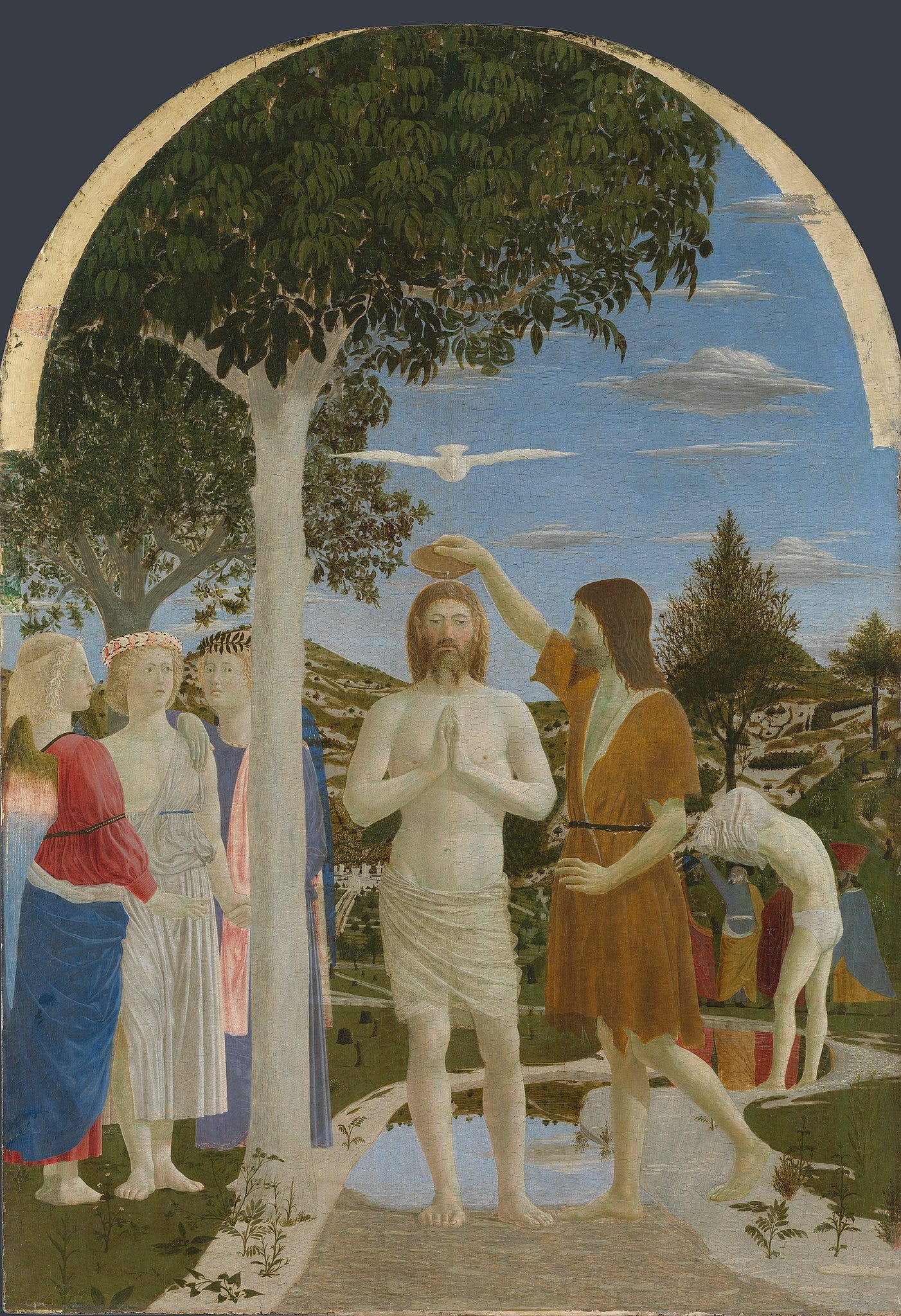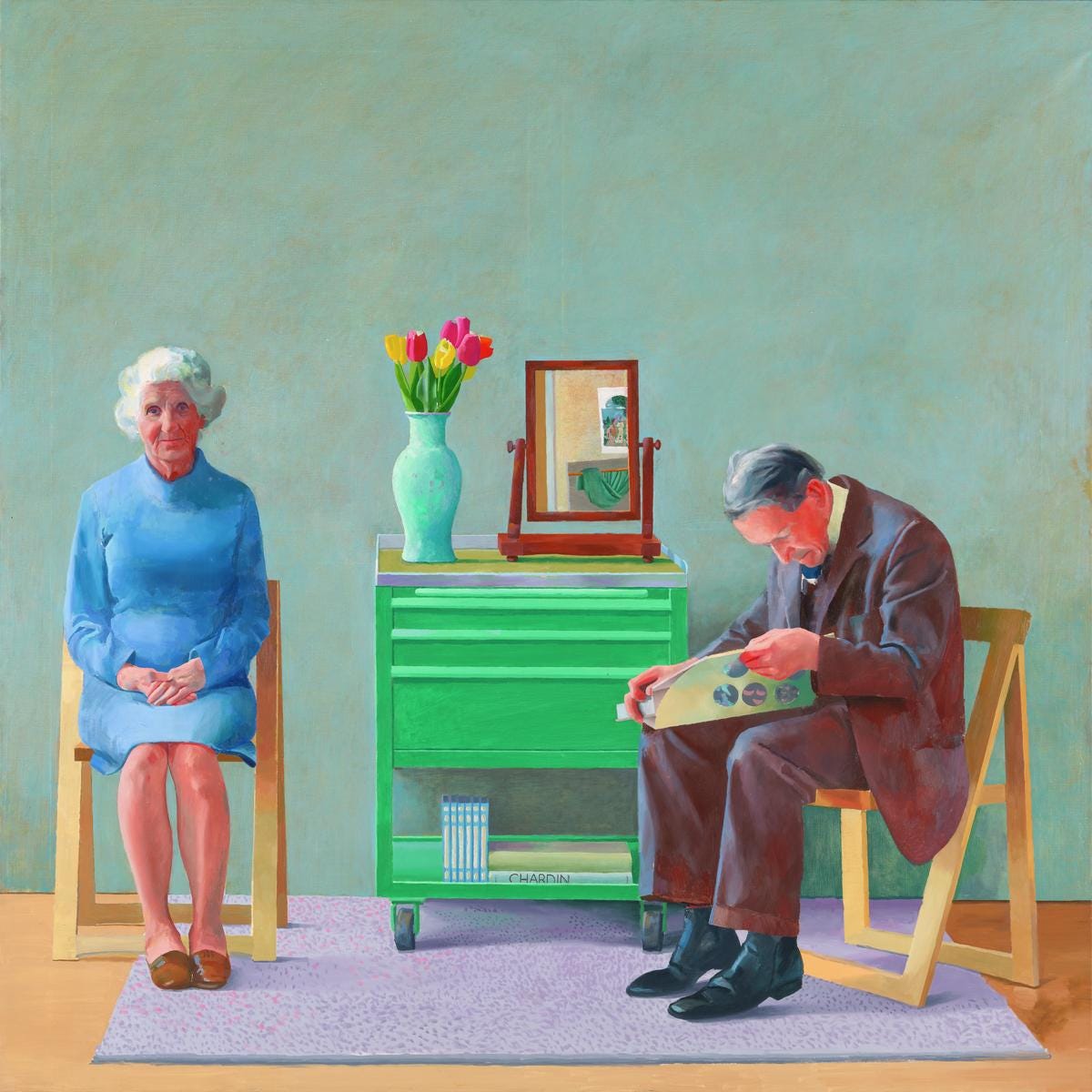A Longer Look - Hockney and Piero
Is an hour too long to look at a painting?
The National Gallery’s latest exhibition illuminating the influence of Renaissance master Piero della Francesca on Pop Art sensation David Hockney is all about close observation. The exhibition centres around a painting that has played a pivotal role in inspiring British Modernism: Piero della Francesca’s ‘The Baptism of Christ’ (around 1437–45). When asked, in 1979, whether he bought works of art Hockney answered ‘No, but I’d love to have that (pointing to a reproduction of ‘The Baptism’ pinned to his studio wall), just so I could look at it every day for an hour’.
This exhibition draws on a series The National Gallery ran between 1977 and 1990 inviting artists to choose, display and discuss paintings from its collection. In 1981 David Hockney was asked, he titled his exhibition ‘Looking at Pictures in a Room’ a play on the title of his painting ‘Looking at Pictures on a Screen’, depicting curator and art critic Henry Geldzahler looking at a screen, on which is pinned four paintings one being ‘The Baptism’.

‘Looking at Pictures in a Room’ examined the way we look at paintings. Hockney created a form of ‘Inception’ worthy of the 2010 science fiction film of that name. In the poster he designed for the exhibition, ‘Looking at Pictures on a Screen’ appears except it is not the original it is a photograph of the scene where Geldzahler is replaced with Hockney and ‘The Baptism’ poster is replaced with Hockney’s own painting. In the gallery space, Hockney set up the same backdrop so viewers could compare the actual gallery posters on the screen with the original artworks and those in Hockney’s painting. Hockney alludes to the reproduction of great works of art and the timelessness of art playfully naming the booklet which accompanied the exhibition ‘Looking at Pictures in a Book’, which included eight postcards of ‘The Baptism’ in full scale as well as details.
The exhibition is part of the National Gallery’s Bicentenary celebrations, drawing attention to the powerful, hidden story of its permanent collection as a catalyst for creativity, while paying homage to Hockney’s original exhibition and demonstrating that encouraging contemporary artists to draw inspiration from the collection has always been a central facet of the gallery’s mission.
But what conclusions can we draw from ‘careful looking’ in this conversation between three paintings? Certainly all three paintings foster contemplation. Of course ‘The Baptism’ has a further religious layer, but even for the atheist or agnostic the stillness of Peiro’s work creates a sense of timeless stability in which one can be transfixed. This is achieved by a slow method of painting in which every detail is given the same exacting attention. Piero’s flat, matte, geometric planes inspired not only Hockney but British modernists before him including Vanessa Bell and Duncan Grant.

The use of sharp contours, typical of 15th-century painting particularly in tempera (in which blending of colours is difficult), emphasises the use of planes of colour to build the image. This is clear to the viewer when standing two feet in front of these vast canvasses an impression not possible in printed reproductions, the thick contours delineate forms for example above the purple rug on the right in ‘My Parents’. The soft matte colours accentuate the stillness of the painting and interestingly while oil was first used to provide softer contours and replicate the natural selective focus of the eye, Hockney, influenced by Piero, despite using oils is much more interested in a geometric approach to perspective in which every detail is in crisp focus, closer to a photograph than natural sight. This way of painting creates the frozen effect typical of early Renaissance paintings. An effect the Illustrated London News described as ‘stiff’ in its assessment of ‘The Baptism’ in 1885, but as Roger Fry put it ‘each generation… has to remake its old Masters. If we did not… …they would not only be old but dead.’
A Longer Look runs Until 27 October 2024 (Room 46) at The National Gallery. Admission is free.





